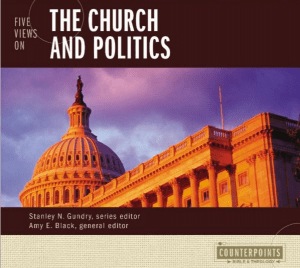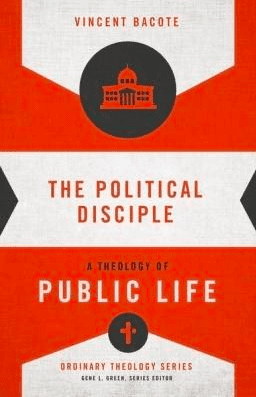This post is by Joe Canner, a regular commenter on this blog, and he is taking on a new book that examines why we had the economic meltdown of 2008.
 Many books and articles have been written attempting to uncover the cause of the 2008 financial meltdown. Gretchen Morgenson and Joshua Rosner, authors of Reckless Endangerment: How Outsized Ambition, Greed, and Corruption Led to Economic Armageddon claim that what sets their book apart is that “it identifies powerful people whose involvement in the debacle has not yet been chronicled and it connects key incidents that have seemed heretofore unrelated.”
Many books and articles have been written attempting to uncover the cause of the 2008 financial meltdown. Gretchen Morgenson and Joshua Rosner, authors of Reckless Endangerment: How Outsized Ambition, Greed, and Corruption Led to Economic Armageddon claim that what sets their book apart is that “it identifies powerful people whose involvement in the debacle has not yet been chronicled and it connects key incidents that have seemed heretofore unrelated.”
Gretchen Morgenson is a Pulitzer-prize-winning financial reporter for the New York Times and Joshua Rosner works for an independent financial consulting company. For the most part it doesn’t appear as if they have a partisan axe to grind: businessmen and politicians of both parties come under scrutiny. The authors also do a good job of keeping it simple and explaining the complex financial terminology so that the average layperson can understand it. The book is long (300+ pages) but engaging and—a plus for the 40+ reader—the print is relatively large.
Who or what do you think was responsible for the 2008 meltdown?
For the average layman, greedy Wall Street executives making huge salaries are a convenient scapegoat for the financial crisis. The authors would not disagree, but they have some very specific and perhaps unlikely culprits in mind.
Many pundits, especially on the liberal side of the spectrum prefer to blame the Republicans, three in particular: Phil Gramm, Jim Leach, and Thomas Bliley. In 1999 these three sponsored a bill repealing the Depression-era Glass-Steagal Act which prohibited banks, insurance companies, and investment firms from merging. The repeal of Glass-Steagal, which led to the merger of Travellers and Citibank, among others, is often blamed both for creating companies that are “too big to fail” as well as encouraging risky investing.
Morgenson and Rosner, however, do not mention Glass-Steagal and Gramm-Leach-Bliley until Chapter 7. For them, the roots of the 2008 crisis go back to the early 1990s. In the first six chapters they explore two main threads: (1) the desire by Bill Clinton and many others (mostly Democrats) to expand home ownership, particularly for low- and moderate-income families and minorities; and (2) the role of Fannie Mae in encouraging a culture of risky real estate investment.
Three of the first six chapters (and parts of others) are devoted to Fannie Mae and its chairman James A. Johnson who significantly increased the profile and profitability of Fannie Mae after he took over in 1991. Fannie Mae was founded during the Depression to buy mortgages from banks and in the ensuing years accrued a number of financial benefits by virtue of its government backing. Under Johnson’s leadership Fannie Mae not only successfully avoided privatization plans but also significantly increased its portfolio and its earnings, taking full advantage of its government connections. Using a combination of lobbying, political contributions, charitable activities, and financial support for academia, Johnson convinced Congress that the government subsidy was good for the American public and also kept detrimental regulations at bay.
Meanwhile, Johnson and other Fannie Mae executives took home huge salaries which were tied to the company’s profitability. This situation in and of itself did not lead to the financial crisis, but it led Johnson to seek more ways to generate business, which eventually included taking on ever-riskier investments. This, in turn, influenced other mortgage lenders to follow suit. As mentioned above, Fannie Mae’s desire to expand coincided nicely with the Democrats’ desire to make housing more available to low-income families and non-traditional borrowers, as well as to end racial discrimination in mortgage lending.
In addition to Fannie Mae’s considerable role, the authors suggest a number of other culprits from the early and mid 90s:
- The FDIC Improvement Act (FDICIA) of 1991, which required that the FDIC intervene with failing banks before they failed completely. A little-known amendment to the FDICIA, introduced by Christopher Dodd (D, RI), expanded the bill to include the possibility of bailing out investment banks and insurance companies. This encouraged such companies to take more risks, knowing that the government would bail them out.
- The discontinuation in 1992 of regulation by the Federal Reserve, led by Alan Greenspan, of certain Wall Street firms that sold Treasury bills on behalf of the government.
- The advent, in 1993, of private companies’ pooling of mortgages into tradeable securities. This spread out the risk of bad loans, but also obscured the investor from seeing whether the original lender had done their due diligence before approving the loan. In addition, such companies were competing with Fannie Mae, who then began taking more risks in order to regain market share.
- The introduction in 1994 by Equifax of credit scoring systems which made loan processing considerably easier, but also took the human element out of credit evaluation.
- The relaxing of HUD regulations in 1995 pertaining to property assessments. Previously assessments were done by independent evaluators, but when mortgage lenders were allowed to use their own evaluators, they tended to over-value the properties.
- The blind eye the banking industry and the government turned to the small-scale subprime mortgage and used-car loan crisis that occurred in 1998.
Do you find these compelling reasons for the 2008 crisis? Is it reasonable to trace its origins back to the early 90s? Or is this just drawing post hoc connections between what were actually unrelated and coincidental events?










